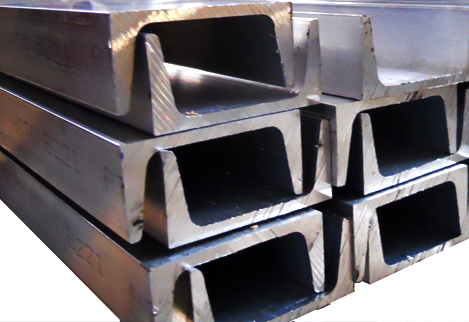Different type of Aluminum Plate production method
There are several manufacturing processes, including forming rolls, pressing of stamps, extraction, forging and/or casting. Aluminium manufacturers may also use secondary and finishing processes, such as machining, boiling, cutting, painting or anodizing, to handle aluminium after its initial creation.

Roll formation is a very common manufacturing technique of aluminium, which makes aluminium more ductile and less porous as it goes on. It produces extremely thin products like Aluminium U Channel, plates of aluminium, aluminium coils, aluminium strips, and hollow products, such as aluminium pipes and aluminium tubing. Operators must use specially shaped rollers to build the latter. Manufacturers would more likely follow this up with secondary procedures such as slitting the coil, cutting the coil to length, shearing the coil, or levelling whether they are manufacturing an aluminium coil.
Stamp pressing is another common way of making flat Aluminium Sheet Singapore, flat plates, and shapes to force the material into big pressure die cavities.
Aluminium extrusion is a method of shaping aluminium that involves heating billets and pressing them into an Aluminium U Channel die. Depending on the properties of the aluminium, they can hot form or cold form it.
Hot extrusion: It is popular with producers for the manufacture of goods such as bars and rods. The temperature ranges from 650°F to 900°F for aluminium. The Steel Supplier Singaporecan use secondary processing after newly developed extrusions have cooled down.
Cold extrusion: On the other side, cold extrusion takes place at or just above the temperature of the room. Manufacturers make stronger extrusions with tighter tolerances and improved surface finishes by applying cooler extrusion. No oxidation is needed for cool extruded aluminium sections. Gear blanks, shock absorber cylinders, fire extinguisher cases, and collapsible tubes are examples of typical cold extruded aluminium items.
Forgin: Forging is a straightforward method that entails punching, squeezing, or hammering aluminium into the desired shape.
The most popular way of shaping aluminium is dying casting. Mild Steel Supplier Singapores pour molten aluminium directly into permanent steel or cast iron mould during this forming process.
Aside from these, aluminium may be sand cast (cast using a temporary sand mould), welded, milled, or powdered.
Alloys
Aluminium alloys can be alloyed into various components, including silicone, titanium, copper, iron and zinc. The factor for which aluminium producers enter depends on the characteristics they choose to make an aluminium alloy component and its applications.
6061 One of the most widely made metal alloys is aluminium. This metal is heat-treatable, welded metal-containing silicone and magnesium, which can be rinsed or cooled. Due to these values, 6061 aluminium Metal Supplier Singapore also supply automotive product manufacturers, including truck and marine components and pipelines.
On the other end of the scale, there is 7075 aluminium. It is incredibly solid when alloyed with zinc. It has almost the same strength as other steel alloys. It also has greater shear and tensile strength than stainless steel, though stainless steel outperforms it in fatigue strength. This corrosion-resistant alloy has such high fatigue resistance that it cannot be welded.